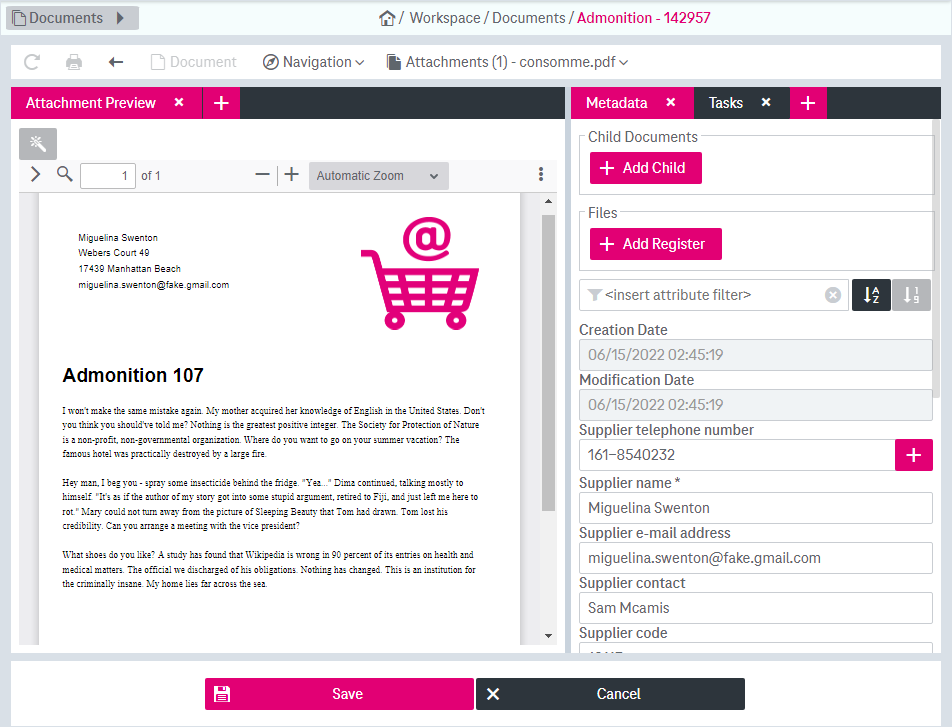The system administration can set up a static, hierarchical file tree structure. A user can link documents to certain nodes (registers) in this tree structure. In contrast to the classification (see chapter Classification structure), documents in a file can be attached to any node regardless of their attribute values, and one document can be attached to multiple nodes.
If a file view has been open for some time, it can be necessary to click Refresh Files to make visible the changes submitted by the other users.
To access the file view, click the tab Files in the search tab bar. The view presents the following areas:
-
the File Tree for navigating between register nodes and for viewing register properties
-
the Hit List for browsing through documents that are linked to a node/register (see chapter Hit list)

Figure 886: Files view with file tree on the left and hit list in the background on the right
When opened for the first time, the file tree only shows the top level registers. To expand or collapse the tree, use the arrow buttons.
The tree is based on a statically defined file structure. If the register contains assigned register properties, they can be displayed via the information icon:
You can perform the following actions with file registers:
-
from a document view: attach a document to a file register
-
navigate through the file tree
-
show documents belonging to a register (where applicable, with additional properties) in a hit list
To attach a document to a register in the document view
If you have enough permissions, you can attach documents to a register as explained below:
-
Open the corresponding document in the document view.
-
Activate editing of the document by expanding the menu Document and selecting Edit.
-
Click the button Add Register in the document view:

Figure 888: Add document to a register in document view
A file panel will now be displayed below the Add Register button:

Figure 889: Select register to add document to
-
To expand the file tree, click the arrow buttons.
-
Click the register node in the file tree to create a link:

Figure 890: Link from a document to a register node
-
You can attach the same document to several registers using the plus button:

A document can be removed from a register by clicking the minus button:

-
Click Save to complete the changes.
You can remove several documents jointly from the same register when editing multiple documents in one window (see section Editing multiple documents).
To navigate through a file tree
You can browse through the tree, either using the mouse or the keyboard:
-
The "Up” and “Down” keys select the next or previous register in the tree.
-
The “Right” key navigates to the next hierarchy level as far as one exists. If the current register is still closed, the respective node is opened automatically.
-
The “Left” key navigates to the previous node of the same hierarchy level if this node is still opened, or to the parent node, if the currently selected node is the first in the list, or if all previous nodes are already closed. If the current node is still opened, it is closed first.
-
The “Space” bar starts a search showing the documents of the register in the hit list. A double-click on a node executes the same action as pressing the “Space” bar.
To search through the documents based on a register property
Prerequisites:
-
Register properties must be preconfigured by your system administrator.
-
A register property must be marked as searchable in the register properties configuration.
-
Expand the register property view by hovering the mouse over the information icon (see Information icon on the right to show properties of a register ) located to the right of the register name:

The following tooltip appears:

Figure 891: Register property view
-
To trigger the search, click the corresponding register property value.
The documents attached to the node with the same register property value will be shown in the hit list.
